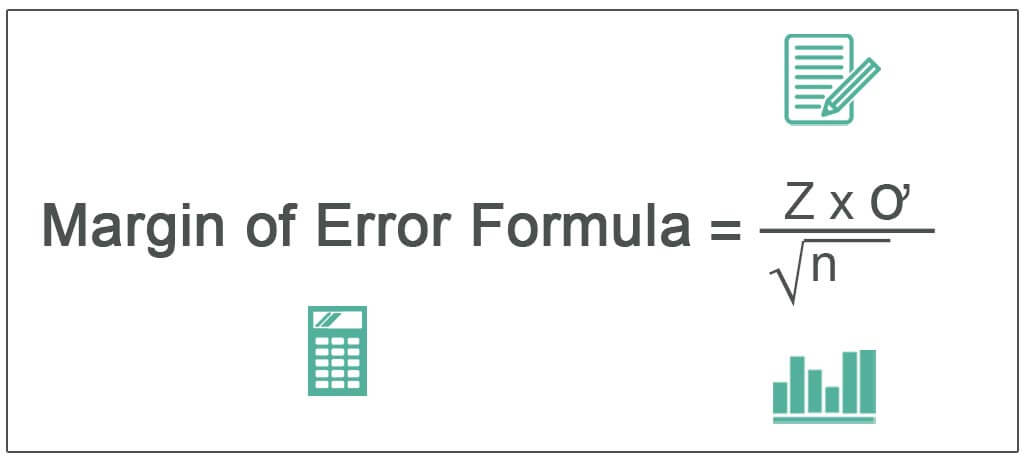
You can find both of these points on the earlier chart. We can be 95% confident that the population percentage for this survey item is within 75% ± 2.684%, or 72.316 – 77.684%.Īdditionally, notice that the MOE for this specific percentage (75%) is 2.684% versus the maximum MOE of 3.099% for 50% when you have a sample size of 1,000. To find the 95% margin of error for this percentage, we do the following: 1000 individuals responded to this survey. Simply enter the percentage as a proportion (i.e., 75% = 0.75), sample size, and Z-score into the formula.įor example, a survey item finds that 75% of the respondents agree with the governor’s policy. It’s easy to use the margin of error formula for other percentages. Finding the Margin of Error for Other Percentages This maximum MOE corresponds to the peak in the chart above. For example, if our sample size is 1000, our maximum MOE is the following: Each sample size has its own maximum value. Because we’re setting the values of these two inputs (Z and p), the maximum margin of error formula becomes a direct transformation of the survey’s sample size, as shown below.įor any survey, all we need to enter into the formula is the sample size to find its maximum margin of error. Consequently, I’ll use the corresponding Z-value of 1.96. To find the maximum MOE that surveys typically report, we need to set p to 0.5 and use the Z-value for our confidence level. Related posts: Critical Values, Z-scores, and Z-table Finding the Maximum Margin of Error Formula Below are the Z-values for the standard confidence levels. You set the confidence level by choosing the critical Z-value. p is the sample proportion or percentage.The Z-value is the critical Z-value that corresponds to your confidence level.The margin of error formula is the following: The MOE is an inferential statistics procedure related to confidence intervals that evaluates the uncertainty involved when using random samples to estimate a population’s characteristics. Unfortunately, these estimates seldom equal the correct value exactly due to random sampling error.

Instead, surveys use samples to estimate them. These population values, also known as parameters, are almost always unknown because it is infeasible to measure entire populations. Surveys frequently use random samples to estimate population percentages.

Conversely, larger MOEs indicate that the survey’s estimates can be further away from the population values. A smaller margin of error suggests that the survey’s results will tend to be close to the correct values. It assesses the precision of a survey’s estimates. The margin of error calculates a distance from the survey’s value in which the actual population value is likely to occur. In this case, the actual population percentage that prefers Brand A likely falls within the range of 72% ± 3%, or 69 – 75%. For example, a survey indicates that 72% of respondents favor Brand A over Brand B with a 3% margin of error. The margin of error (MOE) for a survey tells you how near you can expect the survey results to be to the correct population value.


 0 kommentar(er)
0 kommentar(er)
